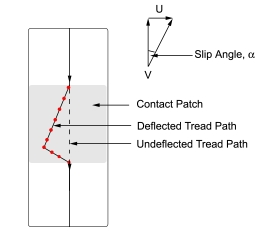The black market or underground market is the part of economic activity involving illegal dealings, typically the buying and selling of merchandise or services (for example sexual services in many countries) illegally. The goods may be inherently illegal (e.g. weapons or illegal drugs); the merchandise may be stolen; or the merchandise may be otherwise legal goods sold illicitly to avoid tax payments or licensing requirements, such as cigarettes or unregistered firearms. It is so called because “black economy” or “black market” affairs are conducted outside the law, and so are necessarily conducted “in the dark”, out of the sight of the law.
Black markets develop when the state places restrictions on the production or provision of goods and services that come into conflict with market demands. These markets prosper, then, when state restrictions are heavy, such as during a period of prohibition, price controls and/or rationing. However, black markets are normally present in any given economy.
Black Market Price
As a result of an increase in government restrictions, black market prices for the relevant products will rise, as said restrictions represent a decrease in supply and an increase in risk on the part of the suppliers, sellers, and any and all middlemen. According to the theory of supply and demand, a decrease in supply-making the product more scarce-will increase prices, other things being equal. Similarly, increased enforcement of restrictions will increase prices for the same reason.
Goods acquired illegally can take one of two price levels. They may be less expensive than (legal) market prices because the supplier did not incur the normal costs of production or pay the usual taxes. Alternatively, illegally supplied products may be more expensive than normal prices, because the product in question is difficult to acquire or produce and may not be available legally.
In the former case, however, most people are likely to continue to purchase the products in question from legal suppliers, for a number of reasons:
- The consumer may feel that the black market supplier conducts business immorally (although this criticism can extend to legal suppliers too).
- The consumer may-justifiably-trust legal suppliers more, as they are both easier to contact in case of faults in the product and easier to hold accountable.
- In some countries, it is a criminal offense to handle stolen goods, a factor which will discourage buyers.
In the latter case of a black market for goods which are simply unavailable through legal channels, black markets will thrive if consumer demand nonetheless continues. In the case of the legal prohibition of a product viewed by large segments of the society as harmless, such as alcohol under prohibition in the United States, the black market will prosper, and the black marketeers often reinvest profits in a widely diversified array of illegal activity well beyond the original “harmless” item.
Black market prices can be reduced by removing the relevant legal restrictions, thus increasing supply. People who advocate this may believe that governments should recognize fewer crimes in order to focus law enforcement effort on the most treatable dangers to society. However, this can be seen by some people as the equivalent of legalizing crime in order to reduce the number of “official” criminals-in other words, a concession that in their view only makes matters worse. Alternatively, the government could attempt to decrease demand. However, this is economically out of fashion and not as simple a process as decreasing supply.
The Term “Black Market” also applies to illegal monetary exchange outside the authorized institutes – Banks or Legal Exchange Offices.
Examples of Black Markets
The Prohibition period in the early twentieth century in the United States is a classic example of black market activity. Many organized crime groups took advantage of the lucrative opportunities in the resulting black market in banned alcohol production and sales. Since much of the populace did not view drinking alcohol as a particularly harmful activity that ought to be legally banned, illegal speakeasies prospered, and organizations such as the Mafia grew tremendously more powerful through their black market activities distributing alcohol.
Another classic example is Burma under the rule of Ne Win. Under his “Burmese Way to Socialism”, the country became one of the poorest in the world, and only the black market and rampant smuggling supplied the people’s needs.
Nowadays in many countries, it is argued a “war on drugs” has created a similar effect for drugs such as marijuana, heroin and cocaine. Despite ongoing law enforcement efforts to intercept illegal drug supplies, demand remains high, encouraging organized criminal groups to ensure their availability. While law enforcement efforts often capture distributors of illegal drugs, the high demand for such drugs ensures that black market prices will simply rise in response to the decrease in supply-encouraging new distributors to enter the market in a perpetual cycle.
Similarly, since prostitution is illegal in many places and yet market demand for the services of prostitutes remains high, a black market usually develops.
Black markets can also form near when neighboring jurisdictions have substantially different tax rates on similar products. Products that are commonly smuggled to fuel these black markets include alcohol and tobacco.
Black markets flourish in most countries during wartime. The rationing and price controls enforced in many countries during World War II encouraged widespread black market activity. Due to severe shortages of consumer goods, black markets thrived in communist Eastern Europe and the Soviet Union.




